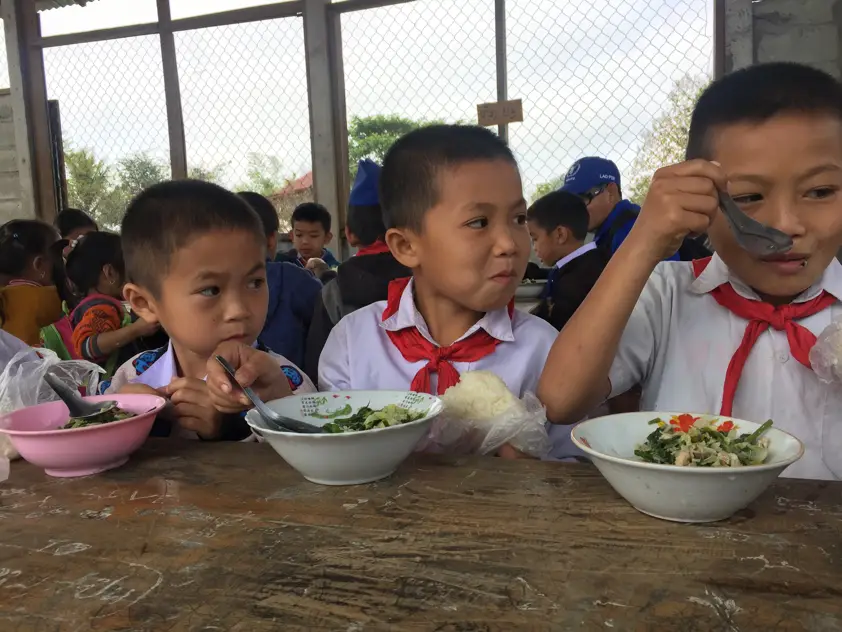
Community-led nutrition
School-meals programme in Lao-PDR implemented by WFP.
Objective
Examine the process of the community-driven school-lunch programme to identify points of entry that enhance its impact.
Client
World Food Programme.
Location
Lao-PDR
Category
Health
Outcome
Strategy inputs for the next phase of the programme.
Problem
WFP is implementing an innovative nutrition-led intervention to address short-term hunger and enhance learning levels of students in public schools of Lao-PDR. At a larger level, the programme contributes towards the food security and nutrition of school children and their families. Over the years, the programme has created a positive dent in the dietary diversity of children, their learning environment at school and their community’s ownership of the programme.
Our Approach
Before stepping into the next phase of the school-lunch programme, WFP wanted to examine the process and outcome of their programme at the community, school and policy level. They partnered with us to understand how they could make the programme more community-centric and enhance the impact on school-children and their families.

Our approach was to first examine the country’s social, economic and cultural context before we deep dived into the nuances of the programme’s processes. Our every observation or suggested change is rooted in the context of the community noting their ethno-linguistic group, their dietary practices, the influence of the naiban (village head) on local practices, the availability of water in the school, and even the distance of their village from the local school.
Over three immersive field visits, our team covered almost 60 schools across seven regions of the country. Our observations informed us that the key concern of the programme was the irregularity of the provision of school lunch during school days. Our conversations with children, parent, teachers and other members of the community revealed different perspectives of the journey of the school-lunch programme in their school and challenges faced at different stages to do so.
For instance, the cooks, who came from within the community, were allocated different days of the week to work in the school kitchen. However, often one of them would have personal responsibilities to take care of and would forget to remind other cooks that she would not be available on a particular day. The next day, the school would not have lunch due to the absence of a cook and the children would go back home for food. Similarly, if the storekeeper travelled out of the village without leaving the key with the school head, the raw material for cooking would not be available. Other concerns that we discovered included structural and behavioural issues such as inadequate water supply, little or no variation in the food recipe and wastage of food due to overestimation of the number of children present on a given day.
Another concern of the programme was the absenteeism in school during post lunch sessions. The school break lasted over an hour that gave children plenty of time to finish lunch and run back to their home which was in the village. Often they would not come back to school in the afternoon session. Since, teachers also went back home for their lunch, there weren’t any planned activities to keep students within school premises during the lunch hour. This affected the attendance during the afternoon session which was a cause of concern for the programme.
With our observations of the entire process, from storage of raw materials, to cooking process, to food in students’ bowl, we were able to provide design inputs to the strategy for the next phase of the programme. Some of the strategy points included small infrastructural changes that made cooking an easier process, creating interactive activities for children to stay in school during lunch-break than go back home, and creating simple roster templates that inform the community members/groups of their day of cooking.
